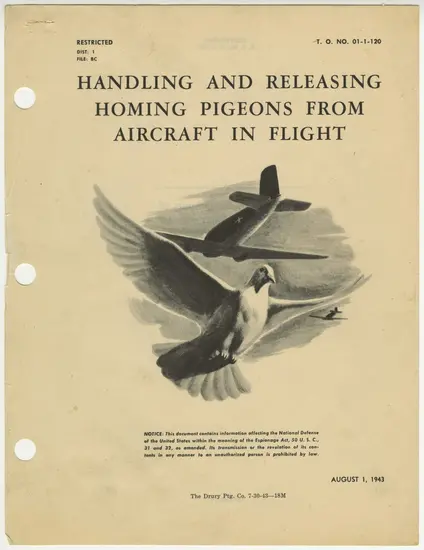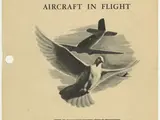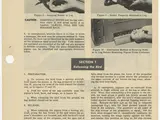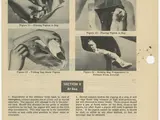
Homing in on Pigeons’ Contributions to World War II
Mar 16, 2021
By David Schwartz and Mark Kahn
Within the National Air and Space Museum’s Archive’s holdings are more than 75,000 aviation-related technical manuals. Amid all these aircraft maintenance manuals, engine overhaul manuals, and parts catalogs, there actually exists a U.S. Army Air Forces (AAF) manual that details the use of homing pigeons in combat zones during World War II. This document, Handling and Releasing Homing Pigeon from Aircraft in Flight, was issued to service personnel in August 1943 and was given a “restricted” security clearance by the U.S. Army.
This Technical Order, designated by the AAF as No. 01-1-120, features a description of the container employed to house the homing pigeons while aboard aircraft in flight.
This manual also details methods for preparing paper messages for the homing pigeons to carry on their “person,” proper handling and care of these birds, as well as attaching the actual messages to them. In addition, this publication describes the correct way to release a homing pigeon for its mission while the aircraft is in midair, on land after a forced landing, or at sea.
A little background is required here regarding the use of homing pigeons during the previous century’s world wars. Thousands of these birds were employed by all combatants in World War I. Cher Ami (French for “dear friend”) was used by the U.S. Army Signal Corps in France during this conflict. She delivered a crucial message from the famous American “Lost Battalion” which was encircled by German troops during the Meuse-Argonne Offensive of October 1918. For her courageous service (while in flight, she was shot by enemy troops and severely wounded in this action), she was awarded the Croix de Guerre medal with a palm Oak Leaf Cluster. Upon her death a year later, Cher Ami was stuffed and is currently on display at the Smithsonian Institution’s National Museum of American History (NMAH).
Homing pigeons served the AAF very capably and valiantly during World War II. They transmitted countless messages within numerous theaters of operation and, as a result, contributed much to the Allied war effort. During this war, 32 pigeons were decorated with the Dickin Medal. This award, created by the British organization, People’s Dispensary for Sick Animals (PDSA), was granted to any animal displaying gallantry under fire. The U.S. Army Pigeon Service’s homing pigeon, G.I. Joe, received this medal for successfully delivering a life-saving message during combat conditions in Italy in October 1943.
These message-carrying pigeons served bravely during times of war. This technical manual helps to remind the reader of the contributions our feathered friends made under, at times, dangerous and harsh conditions.
Related Topics
You may also like

We rely on the generous support of donors, sponsors, members, and other benefactors to share the history and impact of aviation and spaceflight, educate the public, and inspire future generations. With your help, we can continue to preserve and safeguard the world’s most comprehensive collection of artifacts representing the great achievements of flight and space exploration.
Support the Museum
We rely on the generous support of donors, sponsors, members, and other benefactors to share the history and impact of aviation and spaceflight, educate the public, and inspire future generations. With your help, we can continue to preserve and safeguard the world’s most comprehensive collection of artifacts representing the great achievements of flight and space exploration.

















